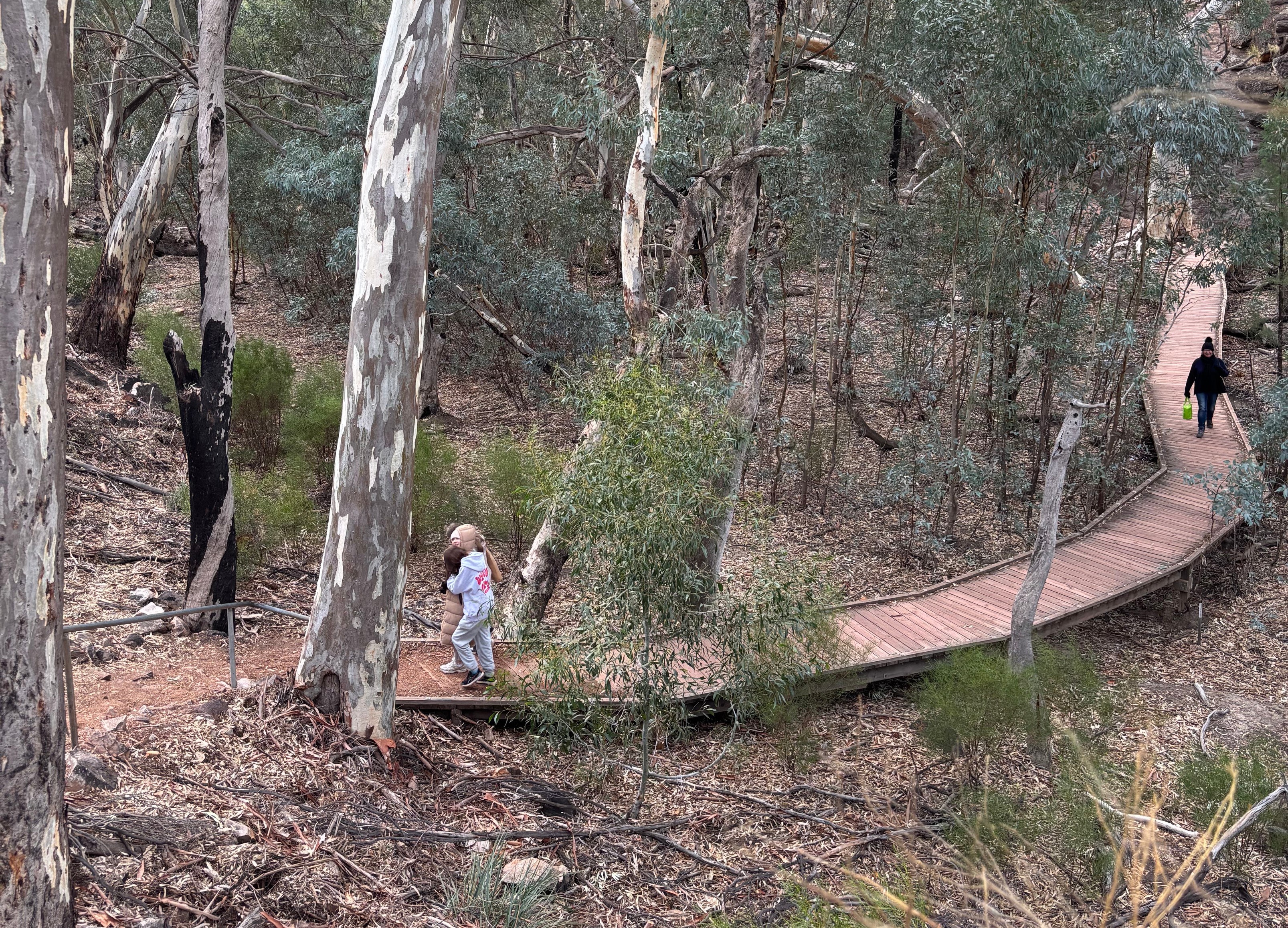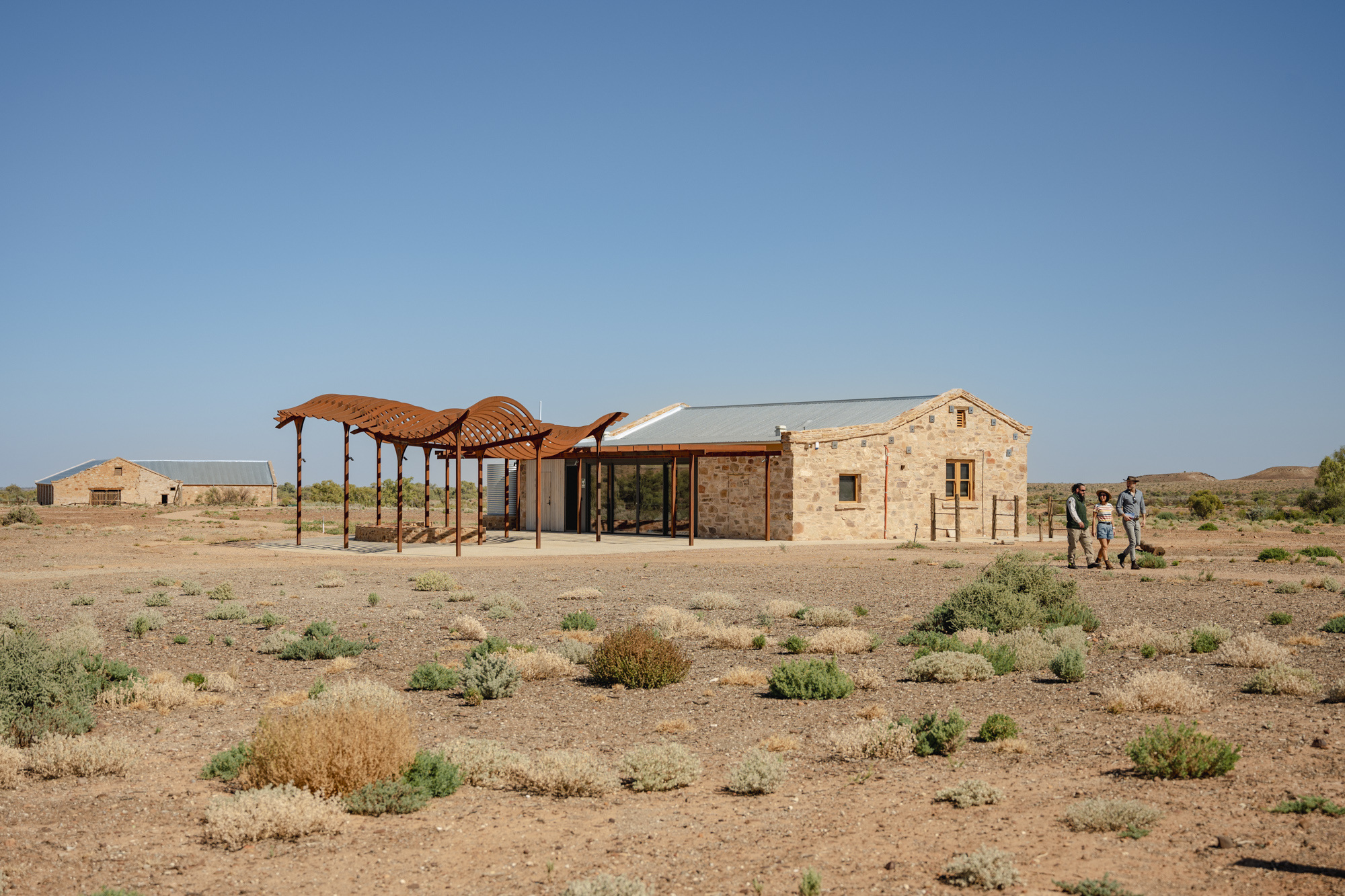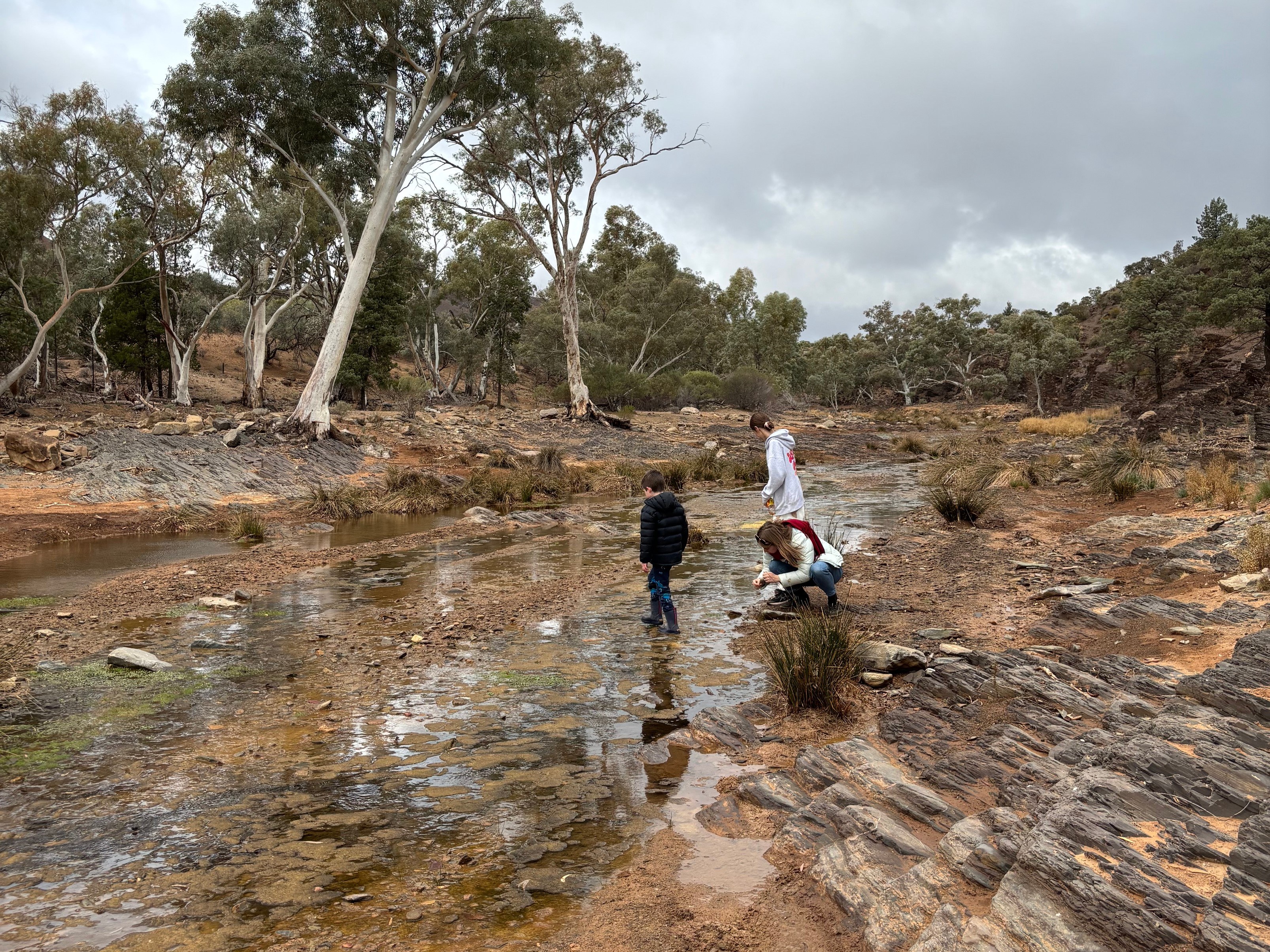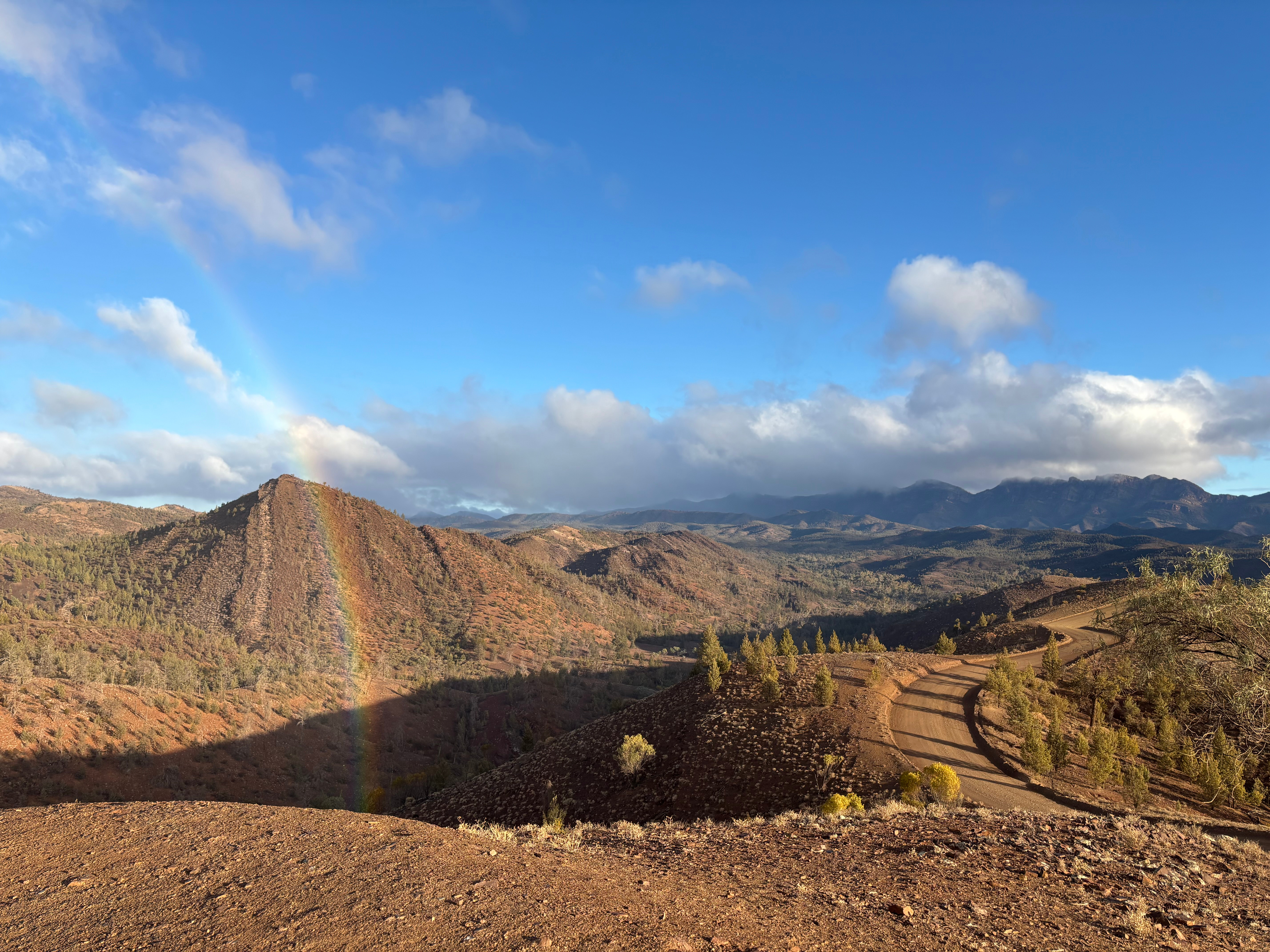
Your guide to discovering the Flinders Ranges this winter
In the cooler months, the Flinders Ranges comes into its own — perfect for hiking by day, campfire cooking by night, and enjoying the peace of wide, open spaces without the crowds.
Here are some ideas to help you plan a short escape into Ikara-Flinders Ranges National Park and beyond.
Day 1: Arrive at Ikara-Flinders Ranges and walk deep into time
After a scenic road trip north from Adelaide, make your first stop the Wilpena Pound Visitor Information Centre where you can grab your park entry pass.
With temperatures sitting comfortably in the mid to high teens, it’s ideal weather for walking. Check out these 7 family-friendly walks, perfect for winter outings.
Winter tip: The days are made for hiking, but nights can be icy. Pack a beanie and thermals, and check out these top tips for visiting parks in winter.

- Planning to camp? Book your camp site early – spots fill quickly. Check out our guide to camping at Ikara-Flinders Ranges.
- If you’re lucky, your camping trip might go to the next level in terms of spotting endangered wildlife, like western quolls or brush-tailed possums.
Stay in the know: Sign up to get updates from DEW, straight to your inbox!
Day 2: Gorgeous gorges and fossil frontiers
Kick off day two with a visit to Nilpena Ediacara National Park, home to some of the oldest known animal fossils on Earth. Book a guided tour in advance to be immersed in this ancient world with an audio-visual display that brings Ediacaran animals to life.

On the way, explore Brachina and Bunyeroo Gorges — a breathtaking drive through 600 million years of geological history. Find the Golden Spike in Brachina Gorge – the best place in the world to recognise the start of the Ediacaran period.
Stop at the historic township of Beltana or Parachilna for a drink or a bite to eat, where you can feast on feral, native and regional produce (along with non-feral options too!).
Top tip: If you’re heading to the Flinders Ranges towards the end of winter, take a look out for the wildflowers that begin to bloom near spring.
Day 3: Discover Blinman’s charm and walk to hidden pools
Start the day exploring the historic town of Blinman — the highest town in South Australia and rich in copper mining history.
Take a heritage walk through town or book a Blinman Mine tour. Enjoy a traditional Cornish pasty or quandong pie from the local café — true outback treats!
Then drive to Angorichina Village and set off on the Blinman Pools Walk — a 12 km return hike on pastoral land that follows a creek line to two picturesque spring-fed pools. Keep an eye out for emus and red kangaroos along the way. The walk can be rocky in sections but offers scenic views and birdwatching in a peaceful gorge setting — well worth the effort in cool winter weather.

End the day with a sunset stop at Stokes Hill Lookout. Pack a chair and cheese platter and soak up the panoramic views across Ikara-Flinders Ranges National Park – a perfect finish to your day!
Top tip: The stargazing in the Flinders Ranges is spectacular when you’re so far from city lights.
Be prepared, stay safe
- Visit the National Parks and Wildlife ‘Know Before You Go’ page to help you plan, pack and prepare for your trip.
- Carry enough water — there’s no guarantee there will be quality drinking water available.
- Wear comfortable enclosed shoes.
- Check for Park Alerts.
- Talk to National Parks and Wildlife staff within the park — they will be able to help you with the most up-to-date information and personal recommendations.

The Flinders Ranges: World Heritage worthy
It’s hard to wrap your mind around, but as you walk in the Flinders Ranges, the land under your feet is over 600 million years old. It’s one of Australia’s truly magnificent landscapes. South Australia is edging closer to finalising the nomination of features of the Flinders Ranges for World Heritage listing.
The Flinders Ranges is the only place on Earth where 350 million years of near-continuous geological sequence can be seen, demonstrating the rise of a habitable planet and the dawn of animal life.
The Adnyamathanha People (meaning hills or rock people) are the traditional custodians of this diverse landscape, which is world-renowned for its wealth of natural, cultural significance, historic and scenic values.
You can learn more about what makes this region worthy of nomination, the benefits of a World Heritage listing and more over here: Flinders Ranges World Heritage nomination.
Want to explore further?
- Heading north? Now’s a rare chance to see Kati Thanda – Lake Eyre with water — here’s how to make the most of it.
- Got a 4WD? Consider a side trip to Vulkathunha – Gammon Ranges National Park, where dramatic gorges and remote tracks await.